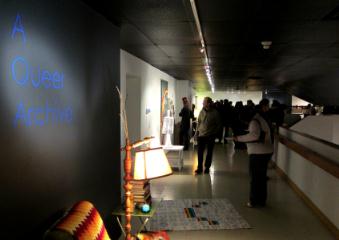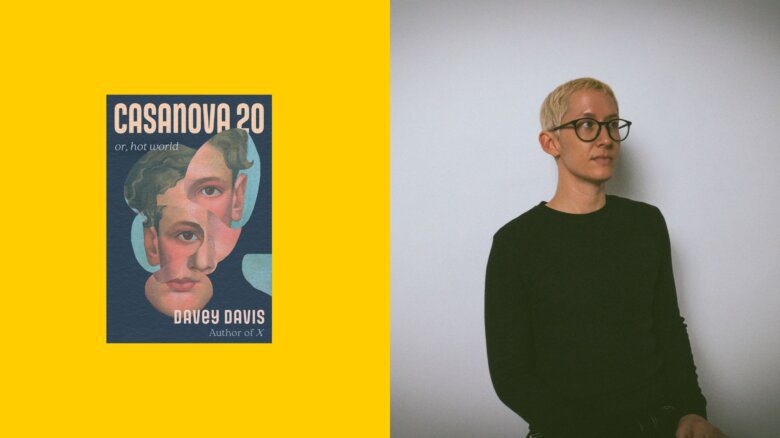
The installation looks like a cozy living room from the '60?s
Celebrating 16 years of handmade, Xeroxed creativity, Canzine, Canada’s largest zine and small-press event, returns on Oct 21 with an interactive installation dedicated to queer history.
Chatham, Ontario, artist Mark Reinhart’s A Queer Archive, one of three art exhibits presented alongside the fair, brings zine culture’s do-it-yourself ethic to its exploration of queer identities.
The installation, which looks like a cozy living room from the 1960s, houses more than 800 books and films dealing with queer history. “Like zine culture, the archive sits on the border of many different communities,” Reinhart says, noting that the piece incorporates elements of installation art, academia and archiving.
The real backbone of A Queer Archive, however, is its expansive collection of personal artifacts past visitors donated to the piece’s ever-expanding inventory. Unlike a traditional library or archive setting, Reinhart views the installation as “an active record and a place of creation.”
Along with Tania Sharpe, public relations coordinator for the Chatham-Kent Library, Reinhart first presented the piece at the Thames Art Gallery in 2011. Noting the tendency for rural queer residents to migrate to the city, he hoped that the donated items, which range from personal photographs and letters to marriage licences and medical bills, would illustrate a “rich queer history in a rural community that says you don’t have to do that, you don’t have to leave.”
“Originally it was going to be an ephemeral piece, and that was part of the point,” Reinhart says. If people lost interest in donating and creating materials for the archive, the project, and the diverse stories it contained, would vanish from view.
The overwhelmingly positive response, and the large number of personal donations spilling out of his garage, led Reinhart to reconsider this position. After attracting the attention of Lindsay Gibb, editor of Broken Pencil magazine and one of Canzine’s organizers, he decided to transform the archive into a travelling exhibition.
“Canzine is about reaching people who are not reached by mainstream media,” says Gibb, who encouraged Reinhart to bring the project to Toronto. “A Queer Archive does this as well with its audience. It attracts queer people who are not always represented in traditional ways.”
How will this change in locale affect A Queer Archive? “I’m not sure what to expect, but I’m expecting to be inspired,” says Reinhart, who is confident the archive can adapt to the needs of many different queer communities.
Canzine 2012
Sun, Oct 21, 1-7pm
918 Bathurst Centre for Culture, Arts, Media & Education
918 Bathurst St
918bathurst.com
$5, includes fall issue of Broken Pencil

 Why you can trust Xtra
Why you can trust Xtra


